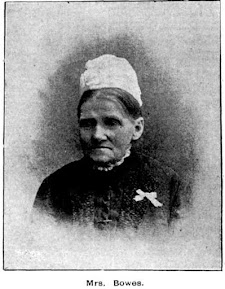Working class hero
As Industrial Relations Laws are being debated in Federal Parliament at the moment, it seems like the right time to honour a man who was arguably known as the "Father of the Trade Union Movement in NSW" and a person whose name is long forgotten.
FRANCIS BURDETT DIXON
Dixon's portrait - public image from ancestry.com
Francis was born in August 1836 near Leeds, Yorkshire, England, son of Joseph Dixon, stonemason, and his wife Susannah. He was named after Sir Francis Burdett, a British Politician and MP who gained notoriety for advocating the right to vote for all European men aged 21 or over regardless of whether they owned or rented property. Joseph Dixon greatly admired what Sir Francis stood for.
Francis became a stonemason following in his father's footsteps and in October 1854 married Elizabeth Chadwick, a weaver, in Preston Lancashire. He, Elizabeth and their young daughter Ann boarded the "Bee" and arrived in Geelong, Victoria in April 1857.
Dixon, working as a Mason in Victoria, found consistent work hard to find and in 1864 moved with his wife and young family to Sydney NSW. Even though finding constant work was just as hard in NSW, he worked mainly as a labourer. He joined the Operative Stonemasons' Society (OSSA) and in 1866 became secretary of its central committee, but soon resigned. However, he was chairman in 1869 and secretary again in 1870. As a result of rising to a prominent position in the union movement, he became Secretary of the Eight Hour System Extension League from 1869 to 1871.
The eight-hour day had first been proposed by Robert Owen in 1817 at his socialist community in New Lanark, Scotland. The sentiments of the movement were captured by the slogan, ‘Eight hours labour, eight hours recreation, eight hours rest’.
Francis was an early delegate of the Trades and Labor Council, serving from 1872 to 1882. He campaigned extensively for the eight-hour day and supported the labour movement's direct involvement in the political system. He was the chief leader of the 1873–74 iron trades strike and helped negotiate its resolution.
Dixon continued to argue for labour representation in Parliament and after Angus Cameron pulled out in 1877, he became the candidate for the Trades and Labour Council in East Sydney. Dixon became a committed protectionist and remained a leading figure in the development of the labour movement. In 1879 Dixon was the chair of the first Intercolonial Trade Union Congress. In 1882 he returned to the presidency of the Trades and Labor Council.
OSSA banners showing the NSW State Library & Sydney University Great Hall - archive.anu.ed.au
By 1883 Dixon was suffering from lung disease which ultimately took his life in early April 1884. His family was destitute, as every excess penny Dixon put towards "the cause". What was worse for the family was that his daughter Emily (Emma on birth records) died 3 days later of Tuberculosis, the same disease that took her father. She is buried in her father's plot, the only other person.
Both above images from findagrave with thanks
The Trades and Labour Council collected funds for the welfare of the family and with leftover pounds commissioned a large Pyrmont sandstone memorial at his burial plot. There are a number of symbols on the memorial including clasped hands, one adopted by the Trade Union movement, as well as sticks tied together, meaning unity is strength; a single stick is easily broken, a bundle of sticks is not. A plaque was placed on the memorial on the centenary of the founding of the Council and states "As part of the Centenary of the Labor Council of New South Wales and as a mark of respect to one of its founders. The headstone of Francis Burdett Dixon was refurbished and dedicated on 3rd October 1971."
The Australian Dictionary of Biography entry written in 1972 states that Dixon was probably the most significant Australian trade unionist of the nineteenth century. A humble man, he walked from his home in Surry Hills, inner Sydney, to various meetings up to three times per week from 1872 to 1882. His humble style earned him respect from his colleagues and employers alike and his ideals helped found the parliamentary Labour Party a few years later.
It was not until 1916 that the Eight Hours Act was passed in Victoria and New South Wales.
Dixon's burial plot and memorial is located in the old Anglican area of Rookwood in Zone B, Section G, plot 1051 - not far from the fence next to Railway Street near Lidcombe train station.
Francis Burdett Dixon memorial - findagrave with thanks
Feel free to comment here about this blog or at the Facebook group page under
rookwoodcemeterydiscoveries
or simply email me at
lorainepunch@gmail.com








We should be much more familiar with his name. There are so many forgotten people who have made a difference to our world! Thanks for shining a light on the life of Francis Burdett Dixon.
ReplyDeleteThank you. This is the aim of this blog to shine a light on people who we may not be familiar with, who we should be
Delete